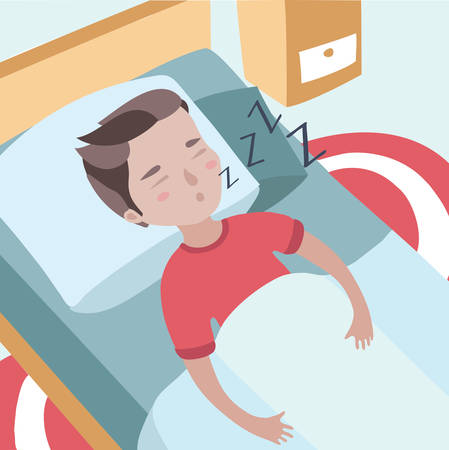Introduction to Electrical Stimulation Therapy
Electrical stimulation therapy, often called e-stim, is a popular treatment used in physical therapy clinics across the United States. It uses gentle electrical currents to help reduce pain, improve muscle strength, and promote healing. Physical therapists use this therapy for a wide range of conditions, making it a versatile tool in rehab programs.
What Is Electrical Stimulation Therapy?
Electrical stimulation therapy involves placing small pads, known as electrodes, on the skin over the area that needs treatment. A device sends controlled electrical impulses through these electrodes. The sensation can feel like tingling or mild buzzing, and it is usually comfortable for most patients.
How Does Electrical Stimulation Work?
The electrical impulses work by targeting nerves or muscles. Depending on the settings and type of e-stim used, the therapy can:
- Block pain signals from reaching the brain
- Encourage muscles to contract and relax, helping with strength and coordination
- Increase blood flow to speed up healing and reduce swelling
Types of Electrical Stimulation Used in Physical Therapy
| Type | Main Purpose | Common Uses |
|---|---|---|
| TENS (Transcutaneous Electrical Nerve Stimulation) | Pain relief | Back pain, arthritis, sports injuries |
| NMES (Neuromuscular Electrical Stimulation) | Muscle strengthening | Knee surgery recovery, stroke rehab |
| IFC (Interferential Current) | Pain management and swelling control | Chronic pain, joint injuries |
| Russian Stimulation | Muscle training | Athletic training, muscle atrophy prevention |
E-Stim in American Physical Therapy Clinics
In the U.S., e-stim is widely used in hospitals, outpatient clinics, sports medicine centers, and home health care. Insurance plans often cover this therapy when prescribed by a licensed physical therapist. Most sessions are quick—usually 15-30 minutes—and can be combined with other treatments like exercise or manual therapy for best results. Patients appreciate that it is non-invasive and has few side effects when performed by trained professionals.
2. Musculoskeletal Pain and Injury
Managing Back Pain, Shoulder Injuries, and Muscle Strains with Electrical Stimulation
Electrical stimulation therapy is a popular tool in American physical therapy clinics for helping people recover from musculoskeletal pain and injuries. This includes common issues like back pain, shoulder injuries, and muscle strains—problems that many Americans face due to sports, work, or everyday activities. Here’s how electrical stimulation is typically used to manage these conditions:
How Does Electrical Stimulation Help?
Physical therapists use electrical stimulation (often called “e-stim” or “stim”) to send mild electrical pulses through the skin to target muscles or nerves. These pulses can help reduce pain, improve blood flow, decrease swelling, and encourage muscles to contract and relax—speeding up the healing process.
Common Musculoskeletal Conditions Treated
| Condition | Symptoms | How E-Stim Helps |
|---|---|---|
| Back Pain (Low Back Pain) | Aching, stiffness, limited movement | Reduces pain signals, relaxes tight muscles, boosts circulation |
| Shoulder Injuries (Rotator Cuff Strain/Tear) | Pain when lifting arm, weakness, swelling | Controls inflammation, improves muscle activation, decreases discomfort during exercises |
| Muscle Strains (Hamstring Pulls, Calf Strains) | Soreness, swelling, trouble moving affected area | Lowers pain and swelling, helps retrain muscles to work correctly |
What Can Patients Expect During Treatment?
During an e-stim session for musculoskeletal issues, small sticky pads are placed on the skin near the painful area. The therapist adjusts the machine to deliver gentle pulses—you might feel tingling or mild tapping sensations. Sessions usually last between 10–20 minutes and may be combined with stretching or strengthening exercises for best results.

3. Post-Surgical Rehabilitation
When recovering from orthopedic surgeries like joint replacements or rotator cuff repairs, physical therapy is a key part of the healing process. Electrical stimulation therapy (often called “e-stim”) plays an important role in helping patients get back on their feet faster and regain function.
How Electrical Stimulation Helps After Surgery
After surgery, patients may experience pain, swelling, muscle weakness, or limited movement. E-stim uses mild electrical currents delivered through sticky pads placed on the skin to target these issues. Here’s how it supports recovery:
| Benefit | How E-Stim Helps |
|---|---|
| Pain Relief | E-stim can block pain signals from reaching the brain, making movement easier and more comfortable. |
| Muscle Activation | It helps “wake up” muscles that may be weak or inactive after surgery, especially when patients have difficulty moving right away. |
| Reducing Swelling | The gentle pulses encourage circulation and lymphatic flow, which can decrease swelling and speed up healing. |
| Preventing Muscle Loss | By stimulating muscles, e-stim can help prevent muscle atrophy when regular exercise is limited during early recovery. |
Common Surgeries That Benefit from E-Stim Therapy
E-stim is commonly used in rehab after:
- Knee replacements (Total Knee Arthroplasty)
- Hip replacements (Total Hip Arthroplasty)
- Rotator cuff repairs (shoulder surgery)
- Ankle and foot surgeries
- Spinal surgeries
Real-Life Example: Knee Replacement Recovery
If you’ve had a knee replacement, your physical therapist might use e-stim to help your thigh muscles (quadriceps) contract and strengthen. This can help you walk better and regain independence sooner.
What to Expect During E-Stim Sessions
- Painless: Most people feel only a gentle tingling or tapping sensation.
- Short Sessions: Each session usually lasts 10-20 minutes as part of your PT visit.
- Personalized Settings: Your therapist will adjust the intensity and placement for your comfort and specific needs.
4. Neurological Disorders
Electrical stimulation therapy is widely used in physical therapy to help people with neurological disorders improve their daily function and mobility. This treatment can be especially helpful for conditions where nerve signals between the brain, spinal cord, and muscles are disrupted or weakened. Let’s take a closer look at how electrical stimulation supports recovery in some common neurological conditions:
Stroke
After a stroke, many people experience muscle weakness or paralysis on one side of their body. Electrical stimulation can be used to “wake up” these weak muscles by sending gentle electrical pulses through the skin. These pulses help muscles contract, which may improve muscle strength, coordination, and make it easier to relearn movements like walking or grasping objects.
Multiple Sclerosis (MS)
MS can cause muscle spasms, weakness, and difficulty moving. Physical therapists may use electrical stimulation to reduce muscle stiffness (spasticity) and improve muscle activation. This can make everyday activities such as standing up from a chair or going up stairs safer and more manageable.
Peripheral Nerve Injuries
When nerves outside the brain and spinal cord are injured—such as after trauma or surgery—electrical stimulation helps maintain muscle health while nerves heal. It also encourages nerve regrowth and restores movement by keeping muscles active even when voluntary control is limited.
How Electrical Stimulation Helps Neurological Conditions
| Condition | Goals of Electrical Stimulation | Common Benefits |
|---|---|---|
| Stroke | Re-activate weak muscles Improve coordination |
Better arm/leg movement Increased independence |
| Multiple Sclerosis | Reduce spasticity Enhance muscle strength |
Smoother movements Less fatigue during activity |
| Peripheral Nerve Injuries | Preserve muscle mass Stimulate nerve healing |
Faster recovery Improved mobility and function |
Key Takeaways for Patients
If you have a neurological condition, ask your physical therapist if electrical stimulation could be part of your rehab plan. Treatment plans are tailored for each person’s needs and goals to ensure safe and effective results.
5. Sports-Related Injuries
How Athletes Benefit from Electrical Stimulation Therapy
In the United States, athletes at all levels—from high school and college sports to professional leagues—often turn to electrical stimulation therapy as part of their recovery process. This treatment is widely used by physical therapists to help manage both acute injuries, like sprains or muscle strains, and chronic conditions, such as tendinitis or overuse injuries.
Faster Recovery and Return to Play
Electrical stimulation (e-stim) works by sending mild electrical currents through the skin to stimulate nerves and muscles. For athletes, this can mean:
- Reduced pain and inflammation after an injury
- Improved muscle strength when regular exercise is difficult
- Prevention of muscle atrophy during periods of rest
- Better blood flow for faster tissue healing
- Enhanced range of motion in injured areas
Common Sports Injuries Treated with E-Stim
| Injury Type | How E-Stim Helps | Typical Sports Affected |
|---|---|---|
| Ankle Sprains | Decreases swelling and pain, helps restore movement | Basketball, Soccer, Football |
| Knee Injuries (ACL/MCL) | Aids muscle activation and prevents weakness post-surgery or injury | Soccer, Football, Track & Field |
| Tendinitis (e.g., Tennis Elbow) | Reduces inflammation and speeds up healing of tendons | Tennis, Baseball, Golf |
| Muscle Strains (Hamstring, Calf) | Relieves pain and supports muscle repair | Track & Field, Football, Baseball |
| Shoulder Injuries (Rotator Cuff) | Improves shoulder mobility and reduces discomfort during rehab exercises | Baseball, Swimming, Volleyball |
E-Stim in American Sports Culture
Athletic trainers and physical therapists across the U.S. often use e-stim devices in clinics, training rooms, and even on the sidelines during games. Many collegiate and professional teams have portable e-stim units so athletes can receive immediate care after an injury. This proactive approach helps players recover more quickly and safely return to their sport.

